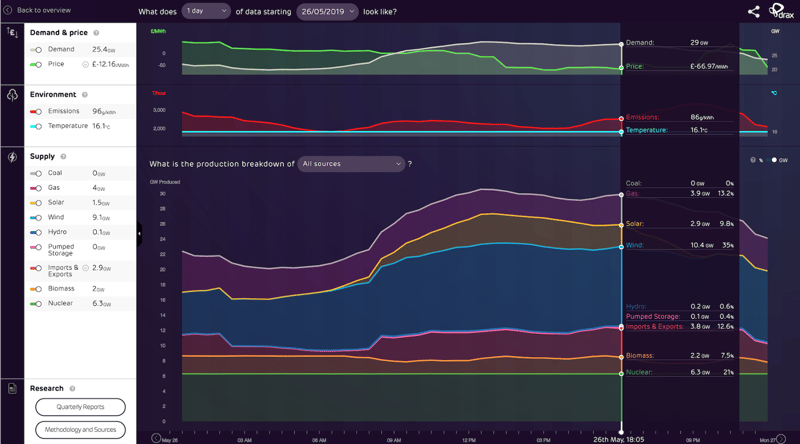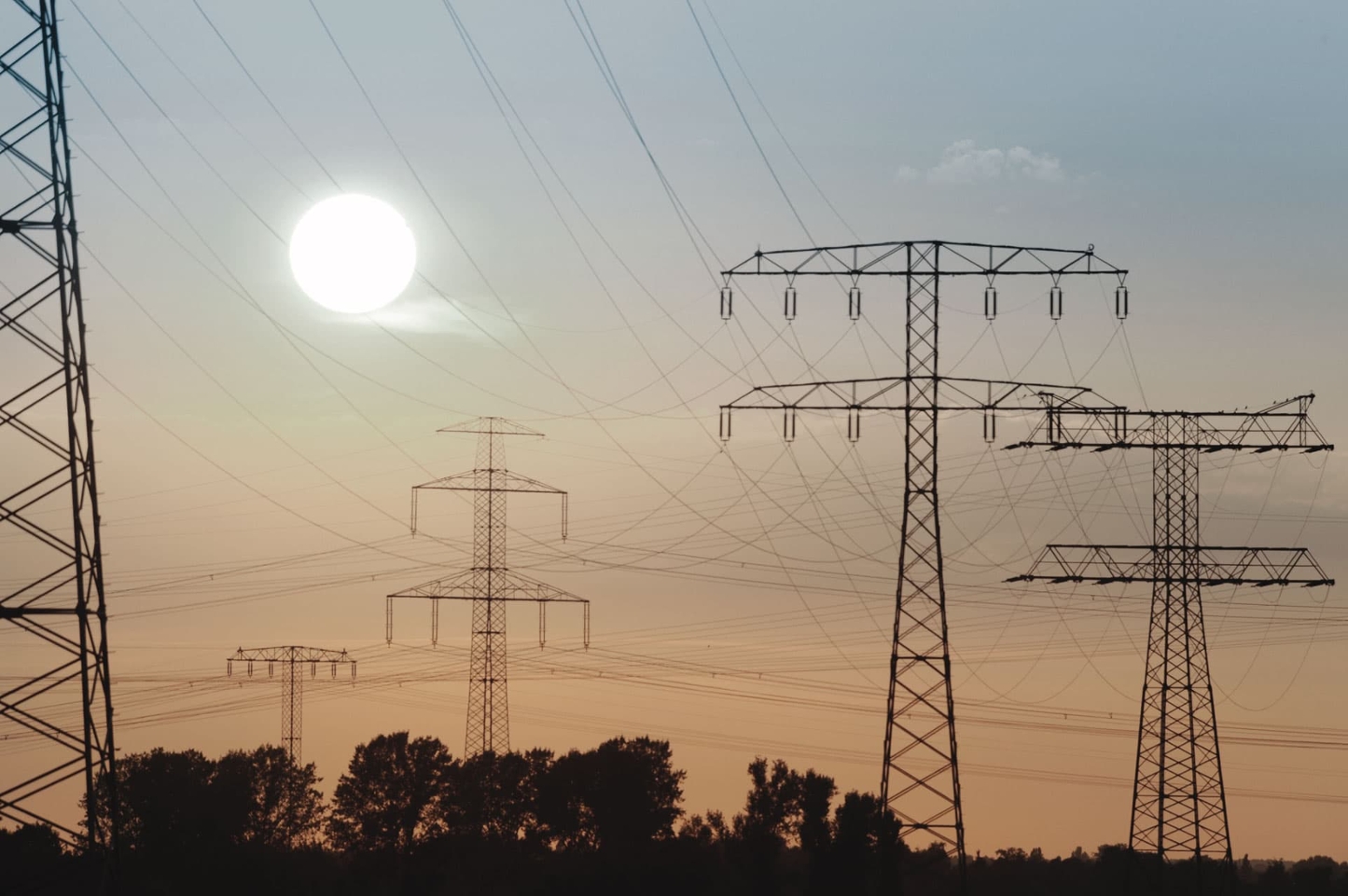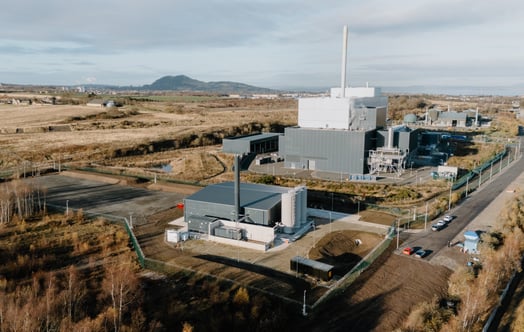How the continued decarbonisation of the electrical grid contributes to the UK’s goal of decarbonising heat.
The UK continues to transform its electrical energy system to deliver the lowest carbon power in Europe.
The combined impact of coal station shutdowns and favourable weather conditions pushed the grid intensity under 100g/kWh for short spells over the last few weeks. This fact should rightly be celebrated as an indicator of the direction of travel for electricity production. The challenge we’re facing now is to replicate this progress in the heat industry.
A critical number when it comes to talking about the carbon intensity of heat is 0.204kg CO2/kWh (BEIS - Greenhouse gas reporting: conversion factors 2018). This is the carbon intensity of the natural gas we burn in the majority of homes and businesses in the UK to get our heat and hot water. Gas, as a primary fuel, cannot be further decarbonised, and boiler technology has matured to the point where efficiency gains are minimal. Alternative fuels and technologies are needed in order to duck under this threshold.

How Great Britain is powered | Electric Insights from @DraxNews | #energy #tech https://electricinsights.co.uk/#/dashboard?start=2019-05-26&&_k=88cxd4
It's important to dispatch heat generation assets when grid intensity is low and store generated heat for the peaks of high demand.
The simple truth is that low carbon grid electricity results in low carbon heat, especially when used in a heat pump. Even direct electrical heating can now be less carbon intensive than the most efficient gas boiler – and any assets installed will continue to improve in performance through no additional investment or modification through their lifetime, as electricity gets cleaner. This advantage is amplified when heat is generated through heat pumps, with high coefficients of performance possible when sensible heat sources are utilised and district heat network temperatures are optimised.
It's important to dispatch heat generation assets when grid intensity is low and store generated heat for the peaks of high demand. It requires intelligent management of the entire network and access to high-quality data. The variable cost and carbon intensity of electricity create great opportunities to manage electrical consumption and heat demand.
The National Grid can be compartmentalised into a number of regions, each with different carbon intensities at any singular point in time, a product of the quantum of renewable generation within that region. For example, at a single moment in time on the 30/05/2019, this carbon intensity ranged from 0.022kgCO2/kWh in the North West of England, to 0.288kgCO2/kWh in the East Midlands. At this moment, all but two of the fourteen regions were reporting carbon intensities that undercut the carbon intensity for natural gas. Locating electrical heat generation within these regions may have an even greater impact when considering the real intensity of the electricity. According to Electric Insights, the average carbon intensity across the UK for the last three months was 0.187kgCO2/kWh. Compare this with the carbon intensity of natural gas.
The ability to decouple the consumption of electricity from heat demand using thermal stores is an enormous benefit to both consumers and Vattenfall as a business.
The combination of lower than forecast demand and spikes in renewable energy generation also create an environment where negative electrical prices exist, as demonstrated over the past weekend. As consumers of electricity, we can benefit from these negative price periods through the generation of heat using heat pumps and storage using thermal batteries or stores. The ability to decouple the consumption of electricity from heat demand using thermal stores is an enormous benefit to both consumers and Vattenfall as a business. There is also the opportunity to gain further benefit from the capacity market, once heat generation assets hit a certain scale, delivering further returns to the energy business.

Even direct electrical heating can now be less carbon intensive than the most efficient gas boiler.
By prioritising heat generation through electricity when prices are negative, Vattenfall can dilute the overall cost of the heat delivered. The control of the assets dispatched is essential in this. Transparency of how the network is performing is an important part of the customer’s experience, with more enlightened consumers expecting to be able to access real-time data regarding the carbon intensity of their heat.
One unintended consequence of this positive movement is the diminishing attractiveness of conventional gas-fired combined heat and power units, which used the electricity generated to offset the carbon intensity of the heat. As the grid electricity has decarbonised rapidly, the carbon displaced by the CHP unit has reduced to a point where even the most efficient CHP unit cannot match a heat pump. This was not foreseen when combined heat and power was at the peak of its popularity - when the grid electricity intensity of 0.519kgCO2/kWh under previous iterations of the Building Regulations precluded their inclusion in a vast number of projects, often used to provide base heat load for large district networks. Operators now have legacy assets on their hands that will actually degrade in carbon performance as the grid continues its march towards zero carbon.
As CHP units exploit the spark gap between the cost of gas and the value of the grid electricity they are displacing, savvy operators will clearly see that running these units makes commercial sense.
In reality, combined heat and power will still operate due to the economic benefits they confer. As the volume of renewable generation on the network increases, the cost of electricity will be expected to rise to account for the volatility of the generation. As CHP units exploit the spark gap between the cost of gas and the value of the grid electricity they are displacing, savvy operators will clearly see that running these units makes commercial sense. The line that they form the backbone of a low carbon heating network however no longer rings true. Intelligent dispatch of efficient heat pumps with well-sized storage promises a far greener future and one that will begin to make more sense commercially.
Achieving electrified heat in the UK starts with regulations and how they are enforced. With the advent of the ban on new gas grids from 2025, the government should take a proactive stance on the calculations that underpin the SAP methodology to start incentivising developers and builders to install electric heating now, meaning that we have a mature industry ready to step away from natural gas once and for all from 2025. SAP’s conservative and outdated estimate of the carbon intensity of grid electricity is preventing the widespread roll-out of electrified heat. This will need to be addressed to convince those with real impact to make the shift.




